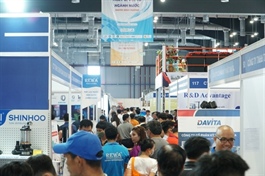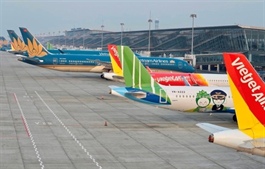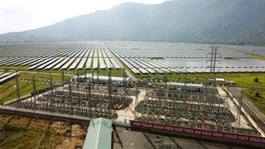Mindset change to boost status of Vietnam’s logistics
Mindset change to boost status of Vietnam’s logistics
Vietnam continues to be chosen as a destination to create growth space for logistics, but more sustainable development remains a target that may be further off.

Tran Thanh Hai, deputy director-general of the Ministry of Industry and Trade’s Agency of Foreign Trade, said at an event to promote August’s Vietnam International Logistics Exhibition that logistics boasts an average growth rate of 14-16 per cent a year in Vietnam, and a scale of $40-42 billion per year.
“According to Agility’s assessment in 2022, Vietnam is ranked 11th in the group of 50 global emerging logistics markets,” Hai said. “Vietnam’s logistics industry has made significant progress and the number of businesses and the quality of logistics service business has increased, making a significant contribution to the import and export results of goods in the year.”
Last year Vietnam hit an all-time high of $732.5 billion in export-import turnover, up 9.5 per cent from 2021. This is the result of the efforts of logistics service enterprises and the government in creating a business environment and improving the competitiveness of enterprises in the economy, Hai added.
Nguyen Duy Minh, general secretary of the Vietnam Logistics Association (VLA), said that freight rates dropped deeply back to pre-pandemic rates last year.
“From a lack of empty containers to carry goods, there became a worldwide surplus of more than six million TEUs, which signals a difficult year ahead for the logistics service industry,” Minh said.
Although the demand for containers witnessed a slow decline, domestic demand and e-commerce remain in growth development.
“Thanks to its political and social stability and favourable geographical position, Vietnam is benefiting from a wave of supply chain shifts. In addition, the country has taken advantage of its long coastline to have a seaport system with optimal capacity, accompanied by an optimistic economic growth rate and stable production,” Minh added.
The boom of e-commerce in both export and domestic consumption has also helped the nation improve its competitiveness to become a centre of transshipment and a vital cog in the global supply chain.
However, various challenges exist at the same time, such as high service costs and increasing pressure on infrastructure. According to experts, the logistics industry still needs to develop infrastructure connectivity, public-private cooperation to expand into logistics centres, and comprehensive supply chains in terms of circulation, processing, preservation, transportation, and distribution.
Cap Trong Cuong, general director of Vietnam Container Corporation, said businesses need to focus on developing technology and supplementing the supply chain and value-added services.
“Currently, many businesses are too concerned with the core business but have not paid much attention to value-added services for their customers,” he said. “Some warehouse operators only care about how many containers are in the warehouse per day. But when customers have other service needs, even small ones such as changing stamps or attaching stamps, they can’t be met, losing competitiveness.”
Ngo Ngoc Hoan, a representative of Samsung SDS Vietnam, added that the investment and transformation of logistics enterprises will feature many trends.
“An important trend today is door-to-door package services, offering plenty of value-added services for businesses. When you can provide many different types of services, it will keep customers attached to the business, and at the same time create convenience for customers to develop their business,” Hoan said.
Digital transformation is also an inevitable trend for logistics enterprises towards digitalisation across all stages, from production and sales to transportation and after-sales, according to Hoan.





















